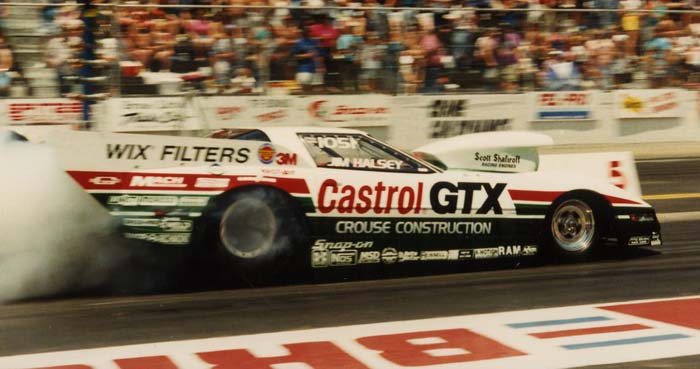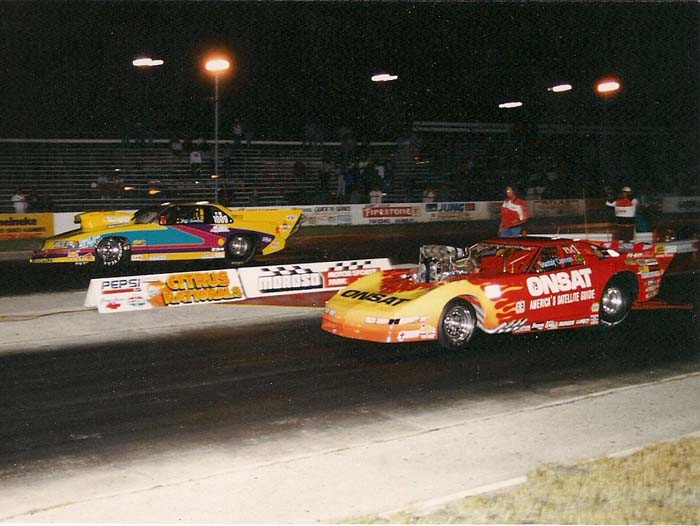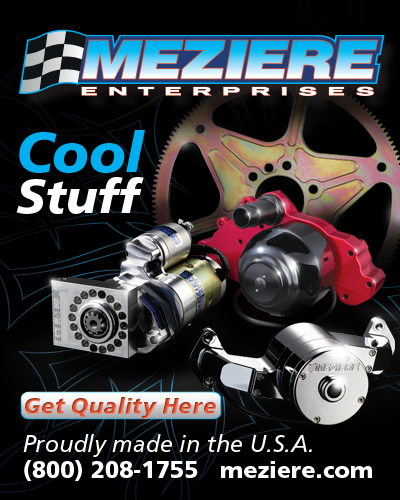ENCORE - PRO MODIFIED: TWO DECADES OF THRILLS, FINAL INSTALLMENT
Originally Published 3-18-2010
READ ALL FOUR PARTS OF THE SERIES …
PART ONE – THE FORMATIVE YEARS
PART TWO - THE MOVEMENT TURNS INTO SOMETHING SPECIAL
PART THREE - THE MOVEMENT IS CHRISTENED AS PRO MODIFIED
PART FOUR - AN ELIMINATOR IS BORN
OUR ALL-TIME TOP 20 PRO MOD DRIVERS 1990 - 2010
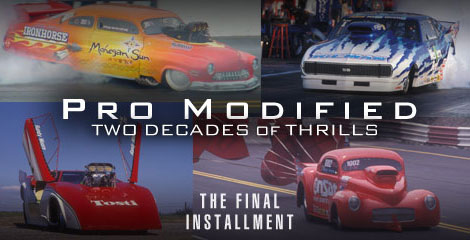 In Part 3 of Pro Modified: Two Decades of Thrills, we focused on the ferocity of the nitrous versus supercharger battles. We also focused on Mike Thermos and his contribution to Pro Modified. We closed with the introduction of the new name for the movement and the positive exhibition which cost the movement one of its colorful players.
In Part 3 of Pro Modified: Two Decades of Thrills, we focused on the ferocity of the nitrous versus supercharger battles. We also focused on Mike Thermos and his contribution to Pro Modified. We closed with the introduction of the new name for the movement and the positive exhibition which cost the movement one of its colorful players.
In the final installment, we will look back to the first Pro Modified national event, the techical aspects of the early Pro Modified cars, where Pro Modified is today. Lastly is a tribute to the one driver who dominated like none other.
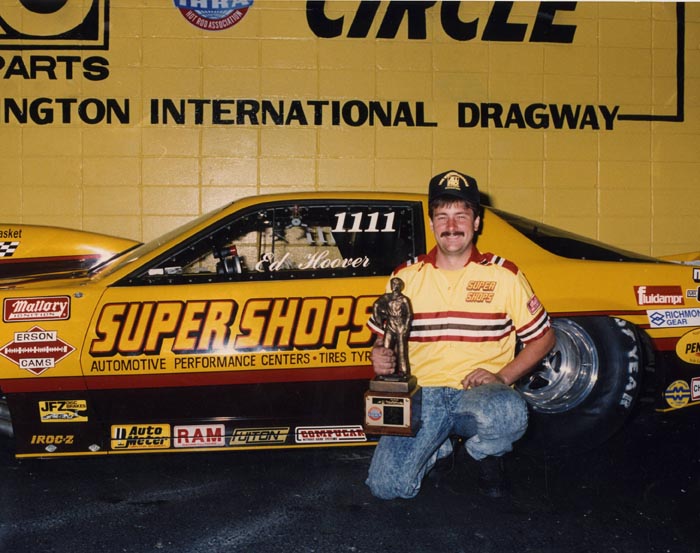
Veteran drag racing journalist Dave Wallace has witnessed some of drag racing’s finest moments over the course of his lengthy career, but his assignment
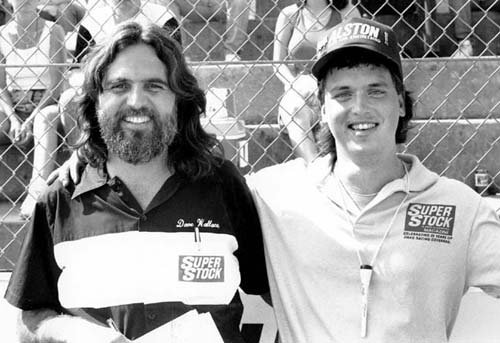
on March 14, 1990 went beyond anything he’d seen before.
Wallace was on assignment for legendary drag racing publication Super Stock & Drag Illustrated to cover the first new professional drag racing trend since the Funny Cars of the late 1960s.
Wallace grew up on the west coast where dragsters were king, and anything with doors were intended as street vehicles and not drag racing icons.
Wallace, a near five-decade veteran of drag racing [he started young], admitted there was a lure to the southeastern phenomenon of quick and fast doorslammer racing.
“I had never really felt compelled to follow a circuit until the Pro Modifieds,” said Wallace, former Hot Rod Magazine staffer who later edited Petersen’s Drag Racing. “When I went to the first IHRA Pro Modified race in 1990, I felt like I was witnessing something special. That whole movement [Pro Modified] was spectacular.”
Along with a historic value, Wallace remembered a special feeling which permeated the atmosphere in Darlington, SC, during the IHRA Winternationals.
RESULTS FROM “THE FIRST
RD 1 –
Ronnie Sox, 7.225, 199.05 def. Mike Ashley [foul]
Brian Gahm, 7.370, 199.05 def. Dennis Fitts 15.716, 58.12
Blake Wiggins, 7.128, 189.37 def. Richard Lee 7.358, 177.55
Tim McAmis, 7.099, 198.73 def. Scott Cannon 7.433, 188.08
Ken Karsten, 7.481, 192.24 def. Bill Kuhlmann, broke
Michael Martin, 7.196, 196.21 def. Sam Snyder 7.124, 200.83
Ed Hoover, 7.028, 193.39 def. Paul Strommen 7.974, 178.17
Norm Wizner, 7.240, 195.51 def. Stanley Barker, 7.340, 192.02
QUARTER-FINALS
Sox, 7.145, 12.900, def. Gahm 67.10
McAmis, 7.104, 202.56, def. Wiggins 7.284, 200.08
Martin, 7.350, 192.70, def. Karsten [foul]
Hoover, 7.062, 193.36, def. Wizner, 7.217, 196.12
SEMI-FINALS
McAmis, 7.010, 200.68, def. Sox, 7.415, 157.22
Hoover, 7.023, 194.21, def. Martin, 7.251, 194.93
FINALS
Hoover, 7.071, 200.12, def. McAmis, broke
No. 1 qualifier – Ashley, 7.075, 198.36
No. 16 qualifier – Sox, 7.617, 182.36
Low ET – McAmis, 7.010
Top Speed – McAmis, 202.68
“There was an outlaw feel to it,” explained Wallace. “It wasn’t like the typical class racing … it was outlaw … it was like Bakersfield in 1959. There was an anti-establishment feel to it that really appeals to me. You felt like they were outside of the rules, except for safety.”
Two years of running on Saturday nights as “pseudo” professional racers in Quick Eight events had finally led to their own professional eliminator. There was no more having to race on Sunday in Quick 32 bracket action in order to get paid for the Saturday participation.
No more of the full tree qualifying. No more parking in the grass.
They were full-fledged professionals much to the chagrin of the Pro Stock teams who resisted the Pro Modified movement like a stomach virus.
“Those guys can say what they want to, but they hated us from day one,” Bill Kuhlmann added.
Kuhlmann joined the Top Sportsman movement in the midst of a successful United Drag Racers Association [UDRA] Pro Stock career. He is credited with winning the introductory Pro Modified event in Atco, NJ., before the class was even named.
“We had respect from all the classes from Top Fuel from everybody at the IHRA,” Kuhlmann added. “Everybody except for Pro Stock.”
A prime example of their disdain transpired within a driver’s committee meeting with every professional category, including the new Pro Modified division.
In a meeting where each class was afforded a representative to air their grievances or opinions regarding their classes, one Pro Stock driver suggested their mountain motor cars needed larger wings and two parachutes. He was quickly reprimanded by a member of the Pro Stock fraternity, one who would later become one of the future owners of the IHRA.
“You ain’t getting that because you’ll look like one of those d*** Pro Modified cars,” the future executive scowled.
The Pro Modified teams, or at least those at the forefront of the movement, didn’t let the attitude bother them.
Kuhlmann was one of those who saw the big picture and did his best to ensure his fellow Pro Mod racers did too.
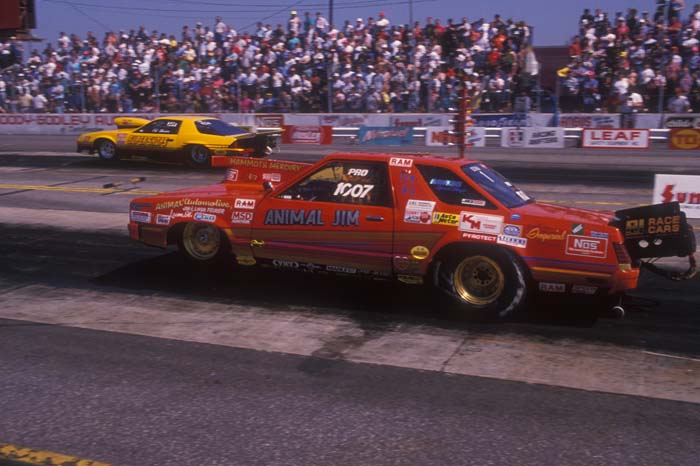
“It wasn’t different for me because I had been professional racing in the UDRA for a few years before that,” Kuhlmann said. “I spent as much time telling other guys, schooling them on the things they needed to be aware of. Trying to polish up their acts and make sure the whole thing was successful.”
His time racing in the UDRA came in handy when leading by example.
“I just wanted to make sure that some of the guys didn’t bring the class down by doing something unprofessional,” Kuhlmann added.
Clearly the one aspect which made these rookie professionals a hit was their showmanship.
“Animal” Jim Feurer, flamboyant in a unique way, brought his unique level of showmanship to Darlington. He was also sporting his trademark pink sunglasses and high top sneakers.
Feurer wanted to be part of the historic first field and was willing to do what it took, even if it meant crashing really bad. The former AHRA Pro Stock hitter was forced to bring his Mercury Zephyr to the first race when his new car was unfinished.
Every time Feurer drove the Mercury, he made it an adventure largely due in part to the car’s chassis having reportedly over a thousand passes. He had crashed the car many times [insert sarcasm] but never hit anything.
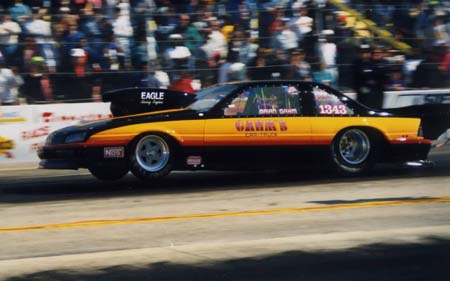
Friday’s qualifying for the first race was washed out leaving only two runs on Saturday. Breakage in the first run left Feurer with only one shot to earn a spot in the field.
Feurer launched the car and the subsequent tire shake rattled the driver’s door open. Instinctively Feurer reached up and grabbed the door to hold it shut, all the while pulling the Lenco levers.
And the steering wheel?
“The car was steering itself,” Feurer said with a hearty laugh. “I shifted a gear, grabbed the wheel, shifted a gear and grabbed the wheel.”
Ironically, in the opposite lane was a diesel repair shop owner from nearby Columbia, SC., who had been a part of the Pro Modified movement dating back to Top Sportsman and the Carolina Quick Eights.
Ed Hoover would go on to win the first event defeating eventual world champion Tim McAmis, who broke on the starting line.
Hoover won the event from the No. 3 qualifying position, behind Mike Ashley and Kuhlmann.
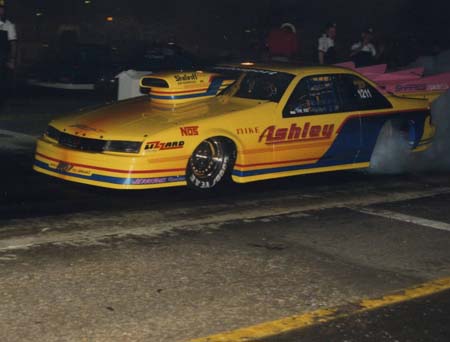
Hoover defeated Paul Strommen [Christine ’58 Plymouth Fury], Norm Wizner [Mega Ford ’57 Ford] and Michael Martin. He established low elapsed time of the event with a 7.023 second pass.
“That event was nothing but exciting, and I have to admit, if Tim McAmis hadn’t hurt his engine, he would have been a handful to run,” Hoover said. “We were both running good that weekend. As it turned out, winning that race will always be a bright part in my career.”
Hoover will always consider the win to be sufficient compensation for missing the first 200 mph run at 199.21. A broken engine mere feet from the finish line also cost him the first-ever six second pass in doorslammer history. He was the car before Tommy Howes, when the barrier was broken.
Nothing, Hoover contends, was going to rob him of winning that first race in 1990.
“I knew I wanted to win, but the magnitude of it didn’t hit me until well after the event was over,” Hoover added. “We had run the Quick Eight events and won a few of them, so it didn’t immediately register to me. I guess you never really believe that as a drag racer you will end up one day in a trivia question. I guess I was just happy to win a drag race.”
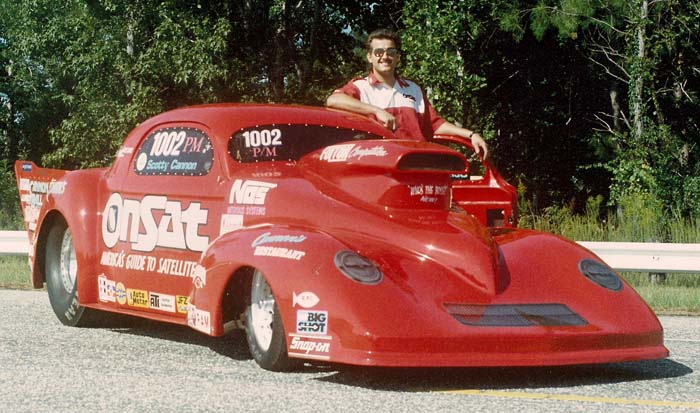
Gene Fulton might be the least likely advocate for Scotty Cannon, but he was.
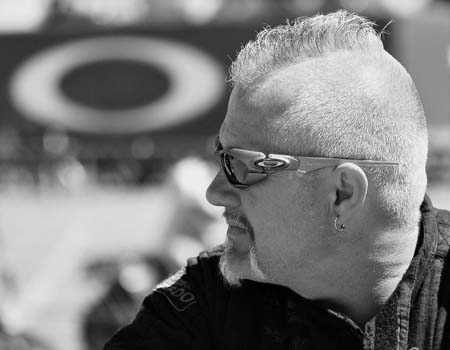
The veteran engine builder, credited with building the first five-second nitrous engine, did his best to warn the Pro Modified contingent that a storm was brewing during the first season.
Fulton, known for his inherent dislike for the supercharged combination, wasn’t prophesying blowers, as a whole, would ruin the class.
His directive focused on one drag racer.
Scotty Cannon, one of Fulton’s former customers, used those words as motivation in the early years of Pro Modified.
Cannon smiles, recalling Fulton’s words, “That boy right there, he’ll be the next world champion because he’s out-working you guys. He’ll outrun you all before it’s all over with.”
Cannon shakes his head at the irony of it all. The one man, who eventually would produce many of Cannon’s staunchest rivals, was the man who tried to warn the class.
“I worked at Fulton’s shop nearly every day and if there were eight days in a week I was down there all eight of them,” explained Cannon, who went on to win his first title in 1991. “We worked on nitrous and nitrous and nitrous and we worked on motors. Naturally he was the brains and I was the flunky, the guy who was learning.
“I remember going down there day in and day out … day and night … flowing nozzles, flowing this and flowing that. I’ll never forget stumbling on a little nitrous stuff which is no good at this day and time, but the car starting running better. It started running really good, it was hurting the motor but I was getting a little bit more help from everybody and they saw a little promise and the next year turned out pretty good.”
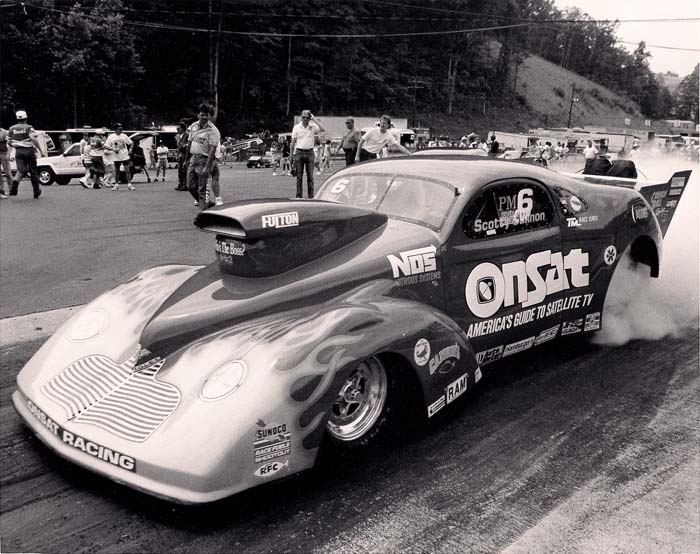
The next year produced not only the first of Cannon’s 28 national event victories but his only nitrous world championship. The next year he would convince Fulton to build his first blown engine, his first move in establishing his versatility as a doorslammer drag racing icon.
“I think Scotty Cannon took Pro Modified to the next few levels,” said Bret Kepner noted Pro Modified historian and then IHRA announcer. “Scotty Cannon did the research and development for everyone else. His biggest contribution to the sport is that he tried every combination known to man. He tried every combination except a small block. He used every single weight break … nostalgia nitrous, nostalgia blown, late model blown and a ’40 Chevy on nitrous … he went through everything including a one-piece Lumina body. He did the work for everyone and essential said, ‘Here’s what works and what doesn’t.”
“If Scotty Cannon ran a ZR-1 Corvette [which he did in 1993], everyone else came out with a ZR-1. If Scotty Cannon came out with a blue ’52 Studebaker with a broken turn signal, everyone in the class would have one shortly after that.”
Because he was always a front-runner, Cannon often drew the ire of his fellow competitors who offered allegations of cheating and threats of tear downs at nearly every national event. Every once in a while those attempted intimidation tactics would draw a response from Cannon, just the kind of diversion that they had hoped for in an attempt to slow him down.
The end result had the opposite effect.
“Even a four year old kid will take bluffing for so long,” said Cannon, in a Drag Racing Monthly article right after losing the 1995 championship to Tommy Mauney. “I ain’t bluffing anymore. Bring me the money, because whoever protests me the first time is going to eat a lot of crow for a long, long time.”
Shannon Jenkins, once Cannon’s staunchest and most formidable rival, was the one driver who brought out the best in Cannon. Between the two drivers there was a seething competitive nature but also a mutual respect.

Simply put, Jenkins was to a nitrous car what Cannon was to the blown combination – the best.
“When we battled it out, we were like the two big bulls in the pasture and we were fighting it out for prized heifer,” Jenkins admitted.
Cannon looks back on the bickering days, and now he smiles, although at the time he just couldn’t seem to get his skeptics to understand that he won more races because he simply raced more. He ran match races nearly every day each weekend, all season long.
Cannon believes his experience had to account for something. The experience of racing on some tracks not even safe to ride a bicycle down, much less a 2,000 horsepower doorslammer.
Cannon recalls one 54-race season, and on one Fourth of July weekend, he ran five races. Many of those tracks were so narrow that he couldn’t open up the door after the burnout.
“Back then it was so serious I couldn’t sleep at night,” said Cannon of the bickering. “Today you look back on it and now it’s like a fight with an old girlfriend, what did I even do it for? But I remember telling a guy, who’s a good friend of mine, ‘I don’t see how you expect to beat me and my team, you sell cars for a living and you come out and play in your play toy, I drag race every day and every week for a living. What makes you think you’re supposed to beat me? Your money’s not going to beat me, because I’ve got the same stuff you got.'”
And no one was a master of making the most of his equipment than Cannon, who is also credited back in the pre-Pro Mod days as being the first to win a Saturday night Quick Eight and Sunday Top Sportsman bracket race.
While Fulton largely gets credit in our article for warning of Cannon’s impending domination, nitrous stalwart Mike Thermos could have easily sounded that same warning a year earlier by witnessing something to this day he still cannot believe.
“I knew there was something special about that guy when we scheduled him to display in our both at SEMA in 1989, and he drove the car [into the convention center and] up to the display,” Thermos said, with a hint of disbelief raising the level of his voice. “Here he was driving this 6.80 car up the aisles like it was going stoplight to stoplight. How many drivers out there can do that?”
For those who witnessed his domination of the Pro Modified division, the answer to that question is a simple one – it starts and ends with one name – Scotty Cannon.

Today’s Pro Modified is mechanical work of art.
NITROUS: IGNORANCE WAS BLISS
Ever since Tommy Mauney drove a single-stage nitrous, small block Opel GT to the Top Sportsman winner’s circle during the 1987 IHRA U.S. Open Nationals, many of the IHRA doorslammer racers worked tirelessly to find a way for efficient nitrous racing.
So much of the early nitrous racing, Mauney said, was trial and error mixed in with monkey-see-monkey-do.
“Ignorance was bliss back then,” Mauney said. “It seemed the more you knew, the more trouble you got into. You really didn’t know, you thought you knew. There were no physicists or chemists back then. It wasn’t until around the early 1990s before we ever got a handle on it.”
Today’s engines can have up to 5 systems but back then, you couldn’t even buy an engine plumbed with nitrous oxide.
“What we had to work with back then was so little compared to what is available now,” explained Ed Hoover who was once a nitrous front-runner. He now runs a blown engine combination.
“Back then when you would get a big inch motor, you were basically on your own when it came to working the nitrous in,” Hoover continued. “Gene Fulton once built me an engine and told me that he didn’t know what it would do once I put the nitrous system on it.”
Gene Fulton, the first five-second nitrous engine builder, says the technology and prices may have increased, but the principles are still the same.
“They all work the same,” Fulton explained. “You were limited to what you could do with the stuff that was made for them. We could have had the big inch engines back then but people didn't spend the money back then like they do today. There is stupid money out there today.”
The going price on a 840-inch nitrous engine from one of the leading Pro Modified nitrous engine builders such as Fulton, David Reher or Sonny Leonard ranges from $80,000 on the low end to in excess of $100,000.
And back in the day of Mauney’s bliss, a nitrous engine could be had for about $25,000.
A driver could win with it, too.
The pre-Pro Modified, well, not exactly.
Many of the early Top Sportsman cars were either bracket cars outfitted with big-inch engines or Pro Stockers with nitrous added, neither of which were adequate for the horsepower they turned. Case in point, the chassis on Charles Carpenter’s all-steel ’55 Chevy, the world’s fastest of its model, was nothing more than the same car he ran Hot Rod in 1981 [10.50 et]. The car, as a Top Sportsman entry, featured a square tube chassis built in Carpenter’s shop and upgraded with an Alston Chassis Engineering Vegas front-end kit and was the first to feature purpose-built struts.
“It was high tech piece in its day but I wouldn’t get out of the electric chair to drive it today,” Carpenter said.
The first of the purpose-built fast doorslammers came in 1987 when leading chassis builders Tommy Mauney, Jerry Haas and Jerry Bickel began developing a new breed of chassis to accommodate the torque meted out by the engines producing nearly 600 horses more than their Pro Stock brethren.
“You were always trying to engineer something to hold the increased horsepower the cars were producing back then,” said Haas. “Back then, the alcohol Funny Cars had the double frame rail and adding that in, helped to control some of the twist. That was one of the initial problems with those cars.”
Many of the former Pro Stock cars turned early Quick Eight/Pro Modified, found the added horsepower contributed to premature fatigue issues.
“You had to add more bars to the chassis,” Haas explained. “That’s what led to today’s modern-era Pro Modified chassis. It demanded a stronger chassis.”
Today’s Pro Modified chassis is on its fourth phase since the original 1980s double-frame rail cars.
“The first chassis we really stepped away from the modified Pro Stock style chassis was when we built those Funny Car style bodies,” Mauney said. “That was the one that was all together different. Today’s chassis is nothing more than a knock off of that. We’ve upgraded for safety over the years.”

BODY TALK

The initial phases of the Pro Modified movement featured cars that looked and performed considerably different from any other doorslammer race car.
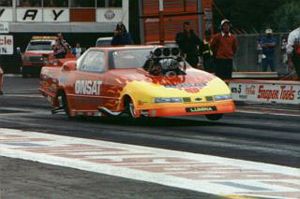
After the initial 1990 season, teams began working on their race car bodies seeking any kind of advantage their aerodynamics could provide. The classic and nostalgic cars were crowd-pleasers and fan favorites but on the strip were akin to pushing a cargo plane down the quarter-mile.
Six-time champion Scotty Cannon opened the flood gate for the body alterations with the debut of the “cow catcher” front end on his 1941 Willys during the inaugural season in 1990. By the end of the season, Cannon had secured the Pro Modified record with a 6.89.
From that point many of the cars became just fiberglass entities with airbrushed grills and front-ends determining what kind of body styles these Pro Modifieds emulated.
Cannon returned for the 1991 season with a new Willys. However, before the season began, the IHRA announced a $20,000-to-win shootout for Chevrolets only. Incredible in one fell swoop of the air-brush, the unique sloped nose Willys became a 1940 Chevrolet.
The sloping, and cutting and maneuvering the body lines wasn’t limited to the nostalgia cars.

Bill Kuhlmann, who had crashed his Beretta at the end of the 1990 season, emerged with a radically altered Camaro which IHRA announcer Bret Kepner creatively labeled as an El Camino with a camper due in large part to its roof-line spoiler.
The IHRA created a new rule aimed at slowing the innovative aerodynamics by requiring both Cannon and Kuhlmann to install a rear-window.
However, no one could have envisioned the tempest coming in 1992 … well, maybe Cannon, his chassis builder Tommy Mauney and Michael Martin did.
Cannon took delivery of three Oldsmobile Funny Car bodies and by the time Mauney got through building the chassis, had a trio of the most aerodynamic Chevrolet Luminas with working doors.
Two of the three cars were nitrous-injected, with Cannon’s as the only one with a supercharger sticking out of the cut-out hood.
For years, Cannon had argued the blown cars were Funny Cars with doors with little action from the IHRA’s Tech Department. In 1992, he gave them a real life Funny Car with doors except it was left-hand driven.

As if the Luma-glass Pro Mods didn’t present enough headaches, a batch of new look “fiberglass” beasts the likes of Willie McKinnon’s “Must Be Magic” 1970 Chevelle and Randy Moore’s Lamborghini showed up in Darlington, SC., left the sanctioning body wondering what they could do to un-ring the bell for body alterations gone wrong.
The IHRA outlawed any further one piece bodies and grandfathered those already in existence. If they ever showed up at a race without those cars, they couldn’t run them again.
The IHRA then introduced a rule stating that all race cars outside of traditional bodies had to be pre-approved.
